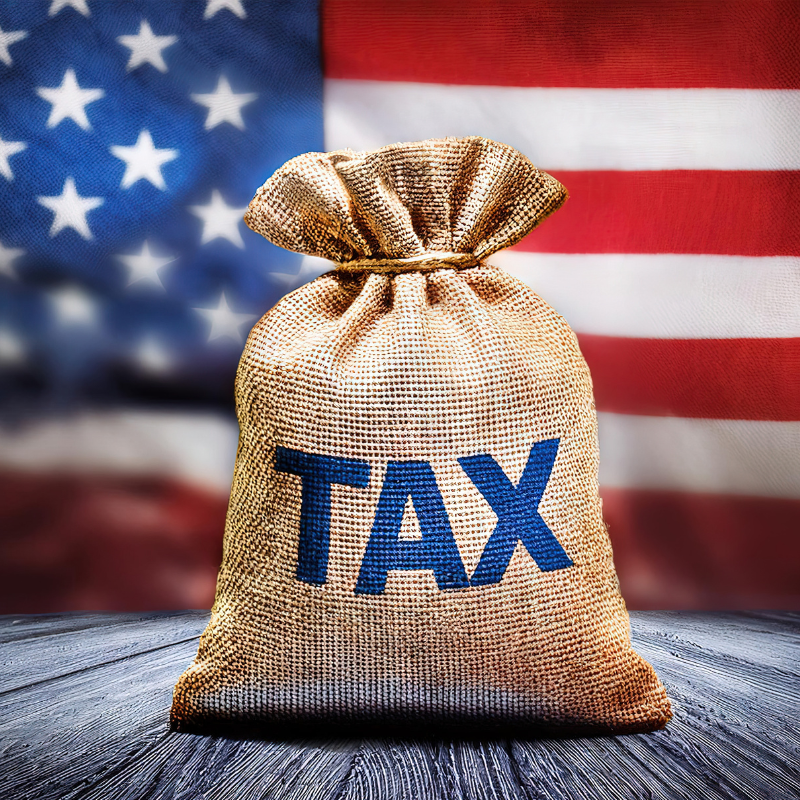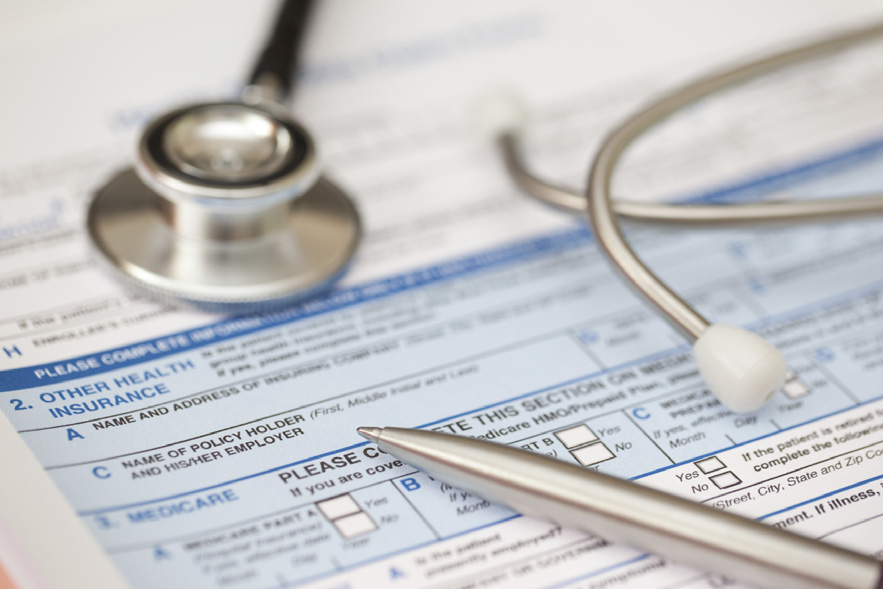On May 22, 2025, the House of Representatives adopted The One Big Beautiful Bill by a vote of 215-214. While the bill could face additional adjustments in the Senate before heading to the president’s desk, it provides the framework for 2025 tax reform.The significant business income tax provisions are highlighted below.
Section 199A, Pass Through Deduction
Under the current law, certain individuals, trusts, and estates may deduct 20% of qualified business income from a partnership, S corporation or sole proprietorship, as well as 20 percent of aggregate qualified real estate investment trust (“REIT”) dividends and qualified publicly traded partnership income.However, this was set to expire as of December 31, 2026.
The House bill would make the Section 199A deduction permanent and increase the deduction from 20% to 23%.
Interest Expense Limitation
Interest paid or accrued by a business generally is deductible in the computation of taxable income, but is subject to several limitations. The deduction for business interest expense includes a limitation of:
- Business interest income of the taxpayer.
- 30 percent of the adjusted taxable income of the taxpayer.
- Floor plan financing interest.
Under the current law, adjusted taxable income was calculated without the ability to add back depreciation, amortization or depletion. The House bill allows adjusted taxable income to include depreciation, amortization or depletion, often referred to as EBITDA, when calculating the 163(j)-interest limitation for taxable years after December 31, 2024, and before January 1, 2030. However, this could be adjusted upon Senate review, as the Senate adjusted a similar provision under the Tax Cuts and Jobs Act, limiting adjusted taxable income to EBIT for certain years.
Note: Also included in the bill is the ability for a manufacturing taxpayer to no longer be subject to the interest expense limitation, provided the company’s previous three-year average of gross receipts is less than $80 million. This would not apply until taxable years beginning after December 31, 2025.
Research and Experimental (R&E) Expenditures
The House bill provides that domestic R&E can be fully deductible for expenditures paid or incurred in taxable years beginning after December 31, 2024. However, immediate expensing for R&E capitalized assets in taxable years beginning after December 31, 2021, and before January 1, 2024, is not provided. In addition, the House provision does not make this change permanent, but rather extends the immediate deduction of domestic R&E expenses to December 31, 2029. The bill also allows domestic R&E expenditures to be recovered upon the disposition, retirement or abandonment of the R&E expenditures.
Note: Foreign R&E expenditures are still required to be capitalized and amortized over 15 years beginning with the midpoint of the taxable year in which the taxpayer pays or incurs the expenditure. In addition, foreign R&E capitalized assets will continue to be amortized, with no immediate deduction allowed when the asset is disposed of, retired or abandoned.
Pass Through Entity Tax
The IRS announced its intention to issue regulations providing that state and local income tax payments made by partnerships and S corporations are deductible by such partnerships and S corporations in computing non-separately stated income or loss under Notice 2020-75. This allows pass-through entities to pay state income tax at the pass-through entity level, which would ultimately give rise to a deduction that could be taken on the partner or S corporation shareholders’ federal individual income tax return.
Under the House bill, specified taxes are limited at the individual income tax return to a maximum deduction of $40,000 (or $20,000 for a married filing separate return). Specified taxes include state and local real property taxes, personal property taxes and income taxes. However, the bill provides that the increased state and local tax cap of $40,000 will not apply to excepted taxes. An excepted tax includes state and local income tax paid or accrued by a qualifying entity, which is allowed a Section 199A deduction and is not considered a specified service trade or business (“SSTB”). Therefore, businesses such as manufacturing, auto dealerships and real estate will be able to avoid their PTET payments being capped at $40,000. However, an additional test is required in that the pass-through entity must derive at least 75% of its gross receipts from a qualified trade or business, applying aggregation rules.
However, businesses involving the performance of services in the fields of health, law, engineering, architecture, accounting, actuarial science, performing arts, consulting, athletics, financial services, brokerage services or any trade or business where the principal asset of such trade or business is the reputation or skill of 1 or more of its employees are considered SSTB’s, and would no longer be allowed to deduct all the state and local income taxes paid at the entity level, and therefore subject to the $40,000 cap.
Note: Specified Service Trade or Businesses, such as law firms and medical facilities, will most likely see a significant increase in their individual effective tax rate, as any pass-through entity tax paid will be limited to a maximum deduction of $40,000.
Get the Latest Tax and Legislative Developments
Withum’s National Tax Policy and Legislative Updates Resource Center is the go-to hub for the latest changes in tax laws and legislative developments from Washington, D.C. Our team closely monitors and analyzes proposed tax legislation, providing individuals and businesses with timely insights to help navigate the evolving tax landscape.
Excess Business Loss Limitation
Under current law, an excess business loss is not allowed for non-C corporation taxpayers.An excess business loss is limited to the threshold amount of $626,000 for a joint return (or $313,000 for other taxpayers) for the 2025 taxable year. To the extent that any loss is in excess of the threshold amount, it is currently treated as a net operating loss in the subsequent taxable year. This allows for the loss to offset income other than trade or business income in future years. The excess business loss limitation rule is applicable for effective taxable years beginning after December 31, 2020, and before January 1, 2029.
The House bill would make the excess business loss rule permanent. In addition, the House bill proposes that any excess disallowed loss created for taxable years beginning after December 31, 2024, must be included in the subsequent year’s testing of the excess business loss limitation. In other words, any disallowed loss created due to the excess business loss rule can only offset business income in the future and will not be allowed to offset non-business income in future years.
Note: This could have a significant impact on individual taxpayers who generate trade or business loss in the aggregate and utilize those losses against non-trade or business income in subsequent years. This is a significant revenue raiser for the House bill, estimated to increase revenue by 9,224 billion dollars over a 10-year period.
Bonus Depreciation
Following the TCJA’s passage in 2017, one of the most notable changes was to allow for 100% section 168(k) bonus depreciation, which allowed businesses to depreciate 100% of the cost basis for certain asset types (machinery and equipment, furniture and fixtures, Qualified Improvement Property and vehicles). However, starting in taxable year 2023, bonus depreciation was required to decrease by 20%, ultimately only allowing 40% bonus depreciation for the 2025 taxable year.
The House bill reinstates 100% bonus depreciation for the 2025 taxable year for assets placed in service after January 19, 2025. The bill would allow for 100% bonus depreciation through the year 2029.
Note: Also included in the House bill is a special depreciation allowance of 100% for qualified production property. Qualified production property is any nonresidential real property, used by a taxpayer as an integral part of a qualified production activity, is new, and for which construction began after January 19, 2025, through January 1, 2029, and is placed in service after the date of the bill is enacted and before January 1, 2033.
Section 179
The House bill provides for a significant increase in 179 expensing to $2,500,000 (currently $1,250,000 in the 2025 taxable year). In addition, the $2,500,000 allowed is not reduced unless the total 179 property placed in service for the taxable year exceeds $4,000,000.
The Section 179 provision allows taxpayers to immediately expense assets placed in service for certain asset types (including machinery and equipment, furniture and fixtures, and vehicles). However, the taxpayer cannot create or increase a tax loss utilizing Section 179 expense. Utilizing Section 179 expense is often preferred over bonus depreciation, if possible, as many states adhere to Section 179 provisions, allowing the immediate deduction to occur on both the federal and state income tax returns. However, some states, including California, New Jersey and Hawaii, have certain provisions that modify/or do not follow the Federal Section 179 expense rules.
Withum’s tax experts are following along as this bill makes its way through Congress and will continue to provide updates on changes that impact businesses.
Contact Us
For more information on this topic, please contact a member of Withum’s Business Tax Services Team.




